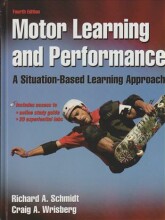Internal external focus - learning experiences - closed and open loop
18 important questions on Internal external focus - learning experiences - closed and open loop
Open control, type of movements
Characteristics of open loop system
What is the picture of open loop control, black box model?
- Higher grades + faster learning
- Never study anything twice
- 100% sure, 100% understanding
Limitations closed loop control
controlling ballistic movements is not possible because the MT is too short
(fast movements with short duration can't be corrected after on set)
Typically closed loop controlled movements
Characteristics of the M3 response
Route of M3 response
Goal of M3 response
What for response is M3
What for response is M2
The goal of M2 response
The route of M2 response
Effect of the M2 response
Characteristics of the M2 response
What for response is M1
Characteristics of M1 response
Route M1 response
Effect of M1 response
The question on the page originate from the summary of the following study material:
- A unique study and practice tool
- Never study anything twice again
- Get the grades you hope for
- 100% sure, 100% understanding
































